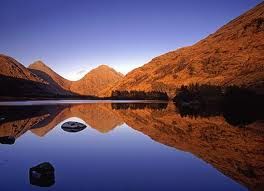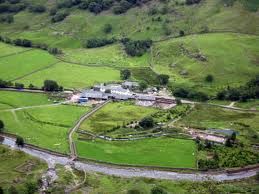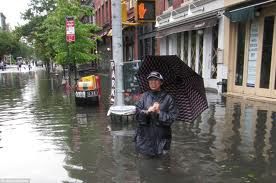I’m handing over to my regular guest blogger today for O. here goes. Enjoy it…
O!
The title might seem a bit strange since all the other letters so far have referred at least to a word or phrase.
Some of you might remember a post from 2.1.13 called Toponymy where I told you about the furthest points north, south, east & west in mainland Britain. The info came largely from a really interesting present I was given at Christmas – A Dictionary of British Place Names (A.D. Mills). For this week I’ve decided to return to it and have a look at some of the entries under the letter “O”.
First entry in the “O” section is Oadby (appears as Oldebi in the Domesday Book of 1086). The “-by” ending means village or farmstead and the first part is the English version of the Scandinavian name Authi.
Another one is not exactly a place but it gets an entry because of its geographical and historical significance – Offa’s Dyke. It was a rampart forming the boundary separating England & Wales. As you may know Offa was the ancient king of an area called Mercia during the latter half of the 8th century AD. He was quite an aggressive king conquering large areas of central England and finally Wales. He built the 150 mile long Dyke to stop the Welsh sending raiding parties into English (=’his’) territory. Mercia was a large kingdom occupying the Midlands area of England: its southern border was with the West Saxons (just east of Bristol area) and East Saxons (a much smaller kingdom north of the Thames and south of the area inhabited by the East Anglian peoples). Mercia’s northern boundary appears to have been at least as far as a horizontal line through Liverpool but may have extended much further up before meeting the southern boundary of the kingdom of Northumbria (today the NE of England).
There is a 177 mile footpath you can walk if you fancy it that follows the line of the original dyke. Lonely Planet have nominated the dyke as one of the must see sites for 2013. It has also been listed in the top ten great wall walks “in the world”. (The rest can be seen here: http://www.lonelyplanet.com/themes/best-in-travel-2013/the-worlds-greatest-wall-walks/ )
Those of you who know your history will remember that the area of North Wales is very probably where King Arthur’s ancient kingdom (5th/6th century) of Avalon was located. The locations of many of the stories about Arthur can be traced to places in the North Wales area. One of the books I’m reading at the moment is called The Keys To Avalon (Steve Blake, Scott Lloyd) and it does a fantastic job of debunking many of the claims about King Arthur (father Uthyr Pendragon, mother Eigyr) being related to areas in the south of England around Glastonbury and even as far north as Scotland. They do it simply by returning to the original Welsh source documents used by the early writers and showing how misinterpretations of some words have caused misleading info to bed itself into major historical works. It also shows how political manoeuvring in some cases and straightforward commercialism in others contributed to some areas or places being claimed as the “real” locations of parts of the Arthurian story. It’s a good read but you’ll need perseverance to keep going through some of the necessary but difficult sections of Welsh etymology.
I was surprised to read the entry just a bit further on – that of Ogbourne Maizey. It had an entry in the Domesday Book as Ocheburn (stream of a man called Occa) and later as Ocheburn Meysey. This latter name comes from the family name de Meysey. It is first mentioned in records just after the Norman Conquest of 1066 and has a variety of spellings: Meysey, Meysy, Maisie, Maysey & lastly Maisey. It is first recorded in Gloucestershire having been given Lordships of the manors of Hampton Meysey & Marston Meysey by the Conqueror himself. Tradition says that the de Meysey family came over with William the Conqueror. It appears to have come from Brittainy (or possibly Normandy). The family does have a crest & coat of arms so it seems LLM may have some very important ancestors. However treat this information carefully as it could be seen that your family displaced existing lords of the area of their homes and lands simply because of its connections to the conquering nation which gave grants of land to its own people. I’m wondering at this point, as LLM has just done a volunteer stint at a massive country house estate (Ham House), whether she is actually subconsciously returning to her thousand-year old ancestral roots. Something in her genes might be saying: “I belong here!” Hmmm… I wonder how long before we will have to address her as “Milady”?
Next is Old Wives Lees; this has to be one of the most unusual village names. Originally called Oldwoods Lees no-one seems to know how it became corrupted into its present form. The highest point in the village is called ‘The Mount’ and this area was used in the film Last Orders (2000) starring Michael Caine & Bob Hoskins. The Pilgrims’ Way – a 132 mile footpath from Winchester (Hampshire) to Canterbury (Kent) – passes close by and was used by those going to the Canterbury shrine of Thomas à Beckett (Archbishop of Canterbury 1162-1170 who was murdered by supporters of Henry II).
Oswestry (Shropshire) means ‘Tree of a man named Oswald’ and I suppose you can see how easily, over many years, you get from Oswald’s Tree to Oswestry. There is a possible connection to St Oswald who was king of Northumbria in about the 7th century although it is clearly in Mercian held territory (see Offa’s Dyke para above).
Odd as it may seem there are 3 places in England called simply Over: one in Cambridgeshire, one in Cheshire, one on Gloucestershire.
Next a couple from across the Irish Sea: Owenavorragh (in county Wexford) meaning “river liable to flood” and Owendalulleegh (in Galway) meaning “river of two milch cows”. At first sight you might be tempted to think they have Welsh connections because the start of both is “Owen” but the etymology splits the names after the first two letters. “Ow” meaning river.
Final entry in the “O” section is Ozleworth meaning ‘Enclosure of a man called Osla’ or surprisingly ‘enclosure frequented by blackbirds’.
And there you have it a brief survey of some interesting places beginning with “O”.



